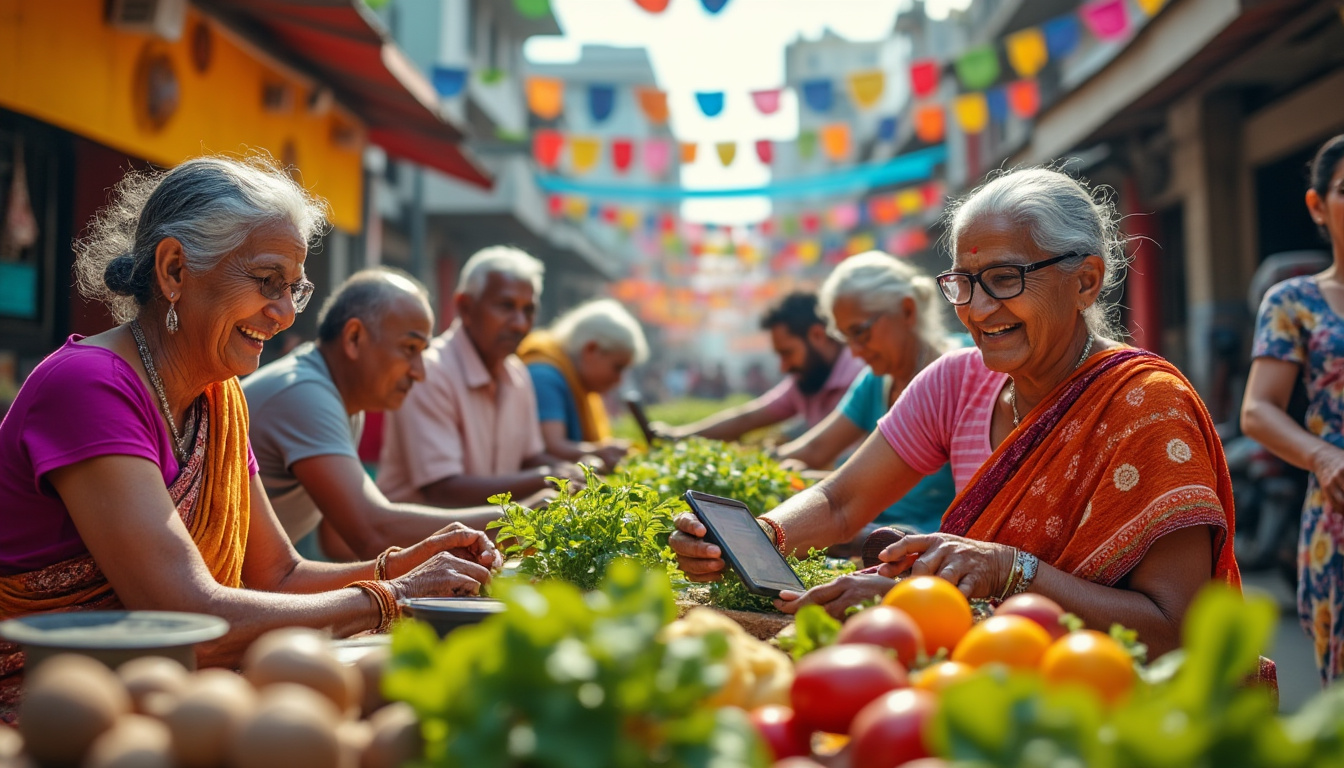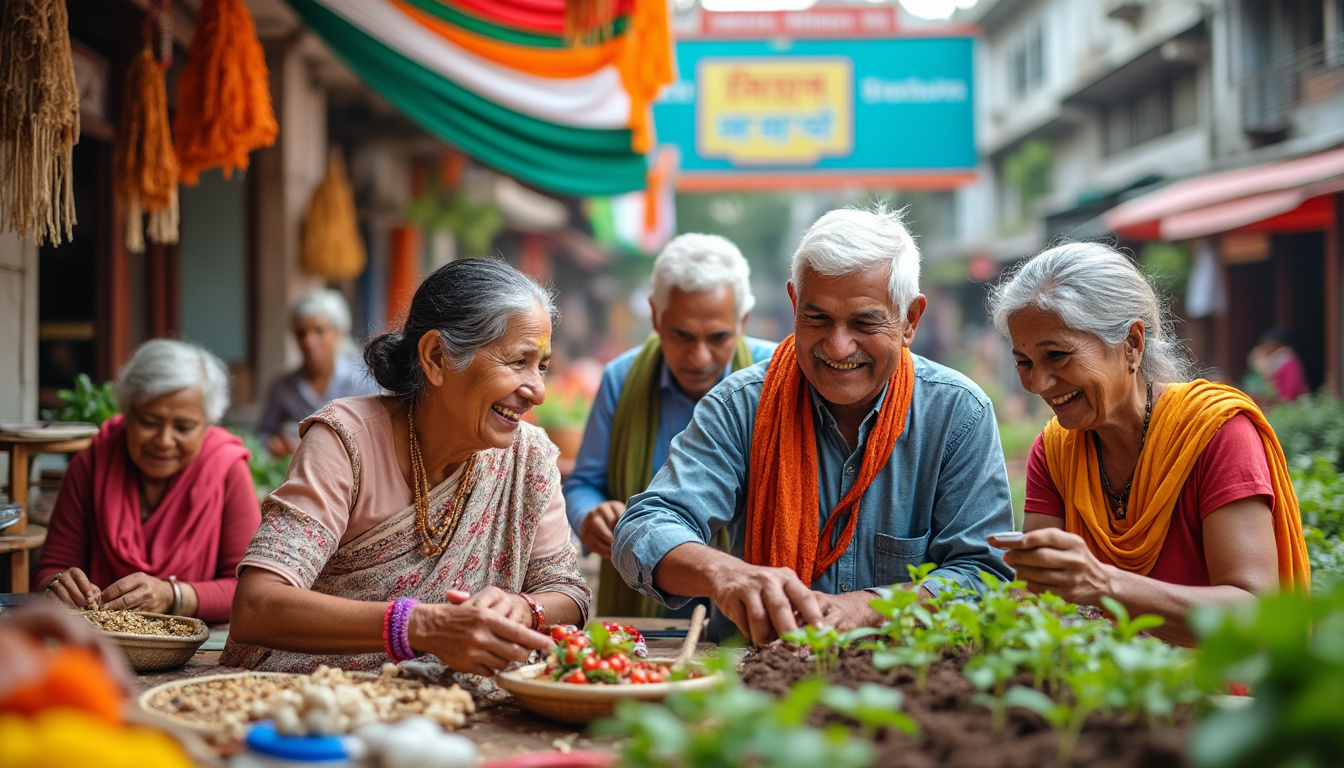We use cookies and data to provide and maintain our services.
These tools allow us to monitor breakdowns and protect against spam, fraud, and abuse.
By analyzing our audience engagement, we continuously improve the quality of our services.
By accepting all cookies, we can develop new services and assess the effectiveness of our advertisements. Additionally, this allows us to offer content and advertisements tailored to your preferences. If you choose to decline, we will limit ourselves to non-personalized content based on your current browsing and general location. To manage your privacy settings, select “More options.”

What is the silver economy?
The silver economy refers to all economic activities related to elderly people. With the increase in life expectancy and the aging of the global population, this economic segment is gaining importance. In India, approximately 300 million seniors represent a significant potential for various industries, ranging from healthcare to financial services, tourism, and assistive technologies. The silver economy encompasses not only the direct spending of seniors but also the opportunities for job creation and innovation to meet their specific needs.
Why do seniors represent an important economic potential in India?
India is undergoing a major demographic transition with a rapidly aging population. Indian seniors combine experience, increasing purchasing power, and specific needs, making them an attractive target for many sectors. Additionally, Indian cultural tradition values respect and support for the elderly, which translates into a greater willingness to spend on the well-being of this age group. This enthusiasm creates opportunities for businesses to develop tailored products and services, such as age-appropriate toys, innovative health solutions, or specialized financial services.
What are the key sectors to exploit this potential?
Several sectors can leverage the silver economy in India:
- Health and wellness: As people age, healthcare needs increase, creating demand for quality medical services, health insurance, and home monitoring technologies.
- Technology: Applications and devices specifically designed for seniors can enhance their quality of life, such as simplified communication devices or health management tools.
- Real estate: The development of accessible housing and serviced residences meets the comfort and safety requirements of elderly people.
- Financial services: Savings, retirement, and investment products designed for seniors are becoming essential for ensuring their financial stability.
- Tourism: Adapted travel offerings comfort and security preferences are increasingly sought after by Indian seniors.
For example, financial institutions such as HSBC, Manulife, and BOC Life are targeting the senior economy in Hong Kong with regular income products.
What challenges must India overcome to capitalize on this population?
Fully exploiting the potential of seniors in India is not without challenges. Among the main obstacles are:
- Accessibility: Many seniors lack access to modern technologies or tailored services, necessitating initiatives to bridge the digital divide.
- Awareness and education: Informing seniors about available products and services is crucial to encourage their adoption.
- Infrastructure: Developing adequate infrastructure, such as accessible housing and specialized healthcare centers, is essential to meet growing needs.
- Professionalism of services: Training professionals to be sensitive and competent in caring for seniors is a priority.
Moreover, collaboration between the private sector and public institutions is necessary to create a favorable ecosystem. A strategic collaboration can facilitate the implementation of innovative and sustainable solutions.
What current initiatives are in place in India to support the silver economy?
India has undertaken several initiatives to strengthen its silver economy. Among these:
- Government policies: Programs like the National Programme for Health Care of the Elderly (NPHCE) aim to improve healthcare for seniors.
- Private enterprises: Companies are developing specific products, such as age-appropriate toys and support technologies, to meet the needs of elderly people.
- Public-private partnerships: Collaborations between public and private sectors, such as that between the Institute of Emerging Market Studies of HKUST EY and the Golden Age Foundation, aim to promote a smart ecosystem for seniors. Learn more.
These initiatives demonstrate a growing commitment to recognize and leverage the economic potential of seniors, thereby fostering an inclusive and prosperous society for all ages.
How can businesses adapt to this market?
To fully capitalize on the silver economy in India, businesses must adopt specific strategies:
- User-centered design: Develop products and services considering the abilities, preferences, and needs of seniors.
- Targeted marketing: Use tailored advertising campaigns highlighting the real benefits for seniors and employing communication channels they regularly use.
- Staff training: Train employees to understand and effectively respond to the needs of elderly clients.
- Continuous innovation: Invest in research and development to create innovative solutions that enhance the quality of life for seniors.
For example, creating senior-friendly urban areas inspired by international collaborations shows how businesses can integrate proven practices to better serve this market segment.
What is the impact of technology on the silver economy in India?
Technology plays a crucial role in the development of the silver economy in India. Innovations such as health apps, monitoring devices, and communication platforms facilitate the daily lives of seniors. For instance, telemedicine technologies provide easier access to medical care, thereby reducing travel and offering regular follow-ups.
Moreover, the Internet of Things (IoT) and smart homes improve the safety and comfort of elderly individuals. The integration of virtual and augmented reality in leisure activities can also enhance their quality of life by offering immersive and stimulating experiences.
Indian technology companies can draw inspiration from international successes, such as those observed in China with senior consumer-focused initiatives, to develop solutions tailored to the local context.
What are the future prospects for the silver economy in India?
The prospects for the silver economy in India are promising, with continuous growth expected in the coming years. The increasing purchasing power of seniors and their willingness to invest in quality products and services drive innovation and competition in the market. Additionally, the growing awareness of the issues related to population aging encourages governments and businesses to collaborate to create sustainable solutions.
Education and information also play a key role, enabling seniors to make informed choices regarding their health, finances, and lifestyle. Furthermore, initiatives aimed at promoting digital inclusion and reducing the technological divide will ensure that seniors are not left behind in the digital revolution.
Building on successful partnerships, like those mentioned in this collaboration, India can develop a robust and smart ecosystem for seniors, ensuring inclusive and sustainable growth of its silver economy.








